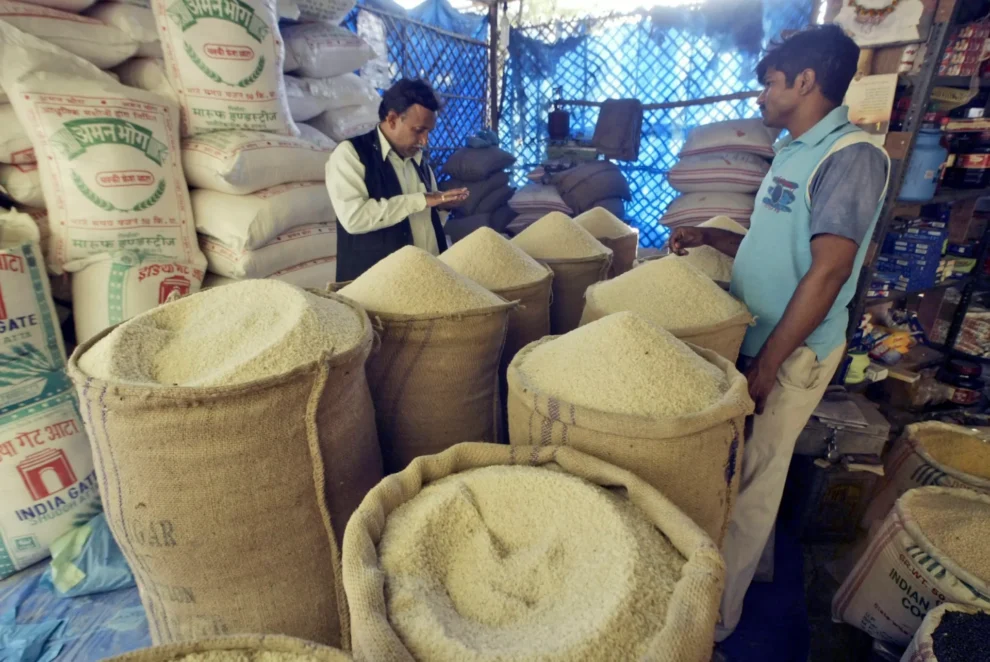If you think you are paying more for rice than you used to at your grocery store, you are not alone.
Food wholesaler Sel Vaheesan, owner of Scarborough, Ont.-based CeyCan Agro Ltd., said his clients are feeling the pinch.
“My clients are mostly small grocery stores in the Greater Toronto Area. I can tell you that the market for rice is very slow right now,” he told Global News.
A series of export restrictions from India, which accounts for 40 per cent of the world’s rice exports, has led to the rising price of the staple foodgrain in Canada. Three days after Russia withdrew from the Black Sea grain deal in July, the Indian government announced that it would be stopping all exports of non-Basmati white rice with immediate effect.
In a statement at the time, the country’s ministry of consumer affairs, food and public distribution cited the need to “ensure adequate availability of Non-Basmati White Rice in the Indian market and to allay the rise in prices in the domestic market.”
This decision comes as Indians have been struggling with high food prices. In September of last year, the government imposed a 20 per cent export duty on rice to lower the price in the domestic market. Despite this, the retail prices of rice have been rising in India. According to the government, the retail price has increased 11.5 per cent in the last year and 3.0 per cent over the last month.
“The prohibition on export of Non-Basmati White Rice will lead to lowering of prices for the consumers in the country,” the ministry said.
In August this year, the Indian government imposed an additional 20 per cent export duty on par-boiled non-basmati rice. Vaheesan said this has hurt consumers and retailers in Canada.
“People don’t have that kind of spending capacity anymore,” he said.
According to Vaheesan, he would sell an eight-pound bag of parboiled rice for around $6 in July. Today, he said the wholesale price is fluctuating between $9 and $9.50.
“In the initial days of the ban, there was some panic buying at grocery stores. But now, people are shifting to other varieties of rice, such as Basmati,” he said.

1:55Agri-food expert speaks to grocery inflation hearings
Basmati rice, which is the more expensive variety of rice available in the market, did not come under the ambit of India’s ban. But an increased demand has put pressure on the price of basmati, too.
Siraj China, the owner of food wholesaler Farah Impex Ltd. in Scarborough, said he was selling a 10-pound bag of basmati rice for $10 before the newest restrictions, which now goes for somewhere between $11-12.
The impact is visible on retail prices too. A 10-pound bag of basmati can be listed between $21 and $22 per bag on apps such as Uber Eats.
China said he expects prices to stabilize in the future, but consumers might have to be more flexible with the kind of rice they’re buying if they want to save money.
“Price will balance itself out. Only thing, is you might not get what you want (in terms of variety). So, if you’re not getting Sona Masuri rice, try Surti Kolam. If you’re not getting Surti Kolam, try Bangladeshi Kalijeera. If you don’t get that, then go to basmati. You’re still going to get rice.”
He said basmati, though considered a more “premium” variety of rice, can act as a replacement for some of the staple varieties people are used to.
“You’ll just have to tweak your recipes to suit your palette,” he said.
According to a 2022 report, two-thirds of the world’s calories come from four staple foods: wheat, rice, maize and soybeans. At least 72 per cent of these crops are grown in just five countries: China, the United States, India, Brazil and Argentina.
STORY CONTINUES BELOW ADVERTISEMENT
The report said “global breadbasket failures” are going to be five times as likely by 2030 and 25 times more likely by 2050. This is linked to the increased intensity and frequency of extreme weather events.
“Rice and maize failures — events that are ‘extremely unlikely’ today in the global breadbasket regions — will occur at least every other year by 2050,” the report said.
Source: Global News
















